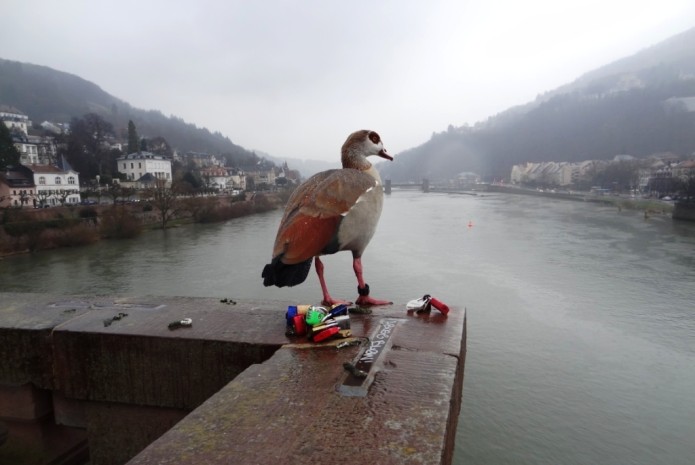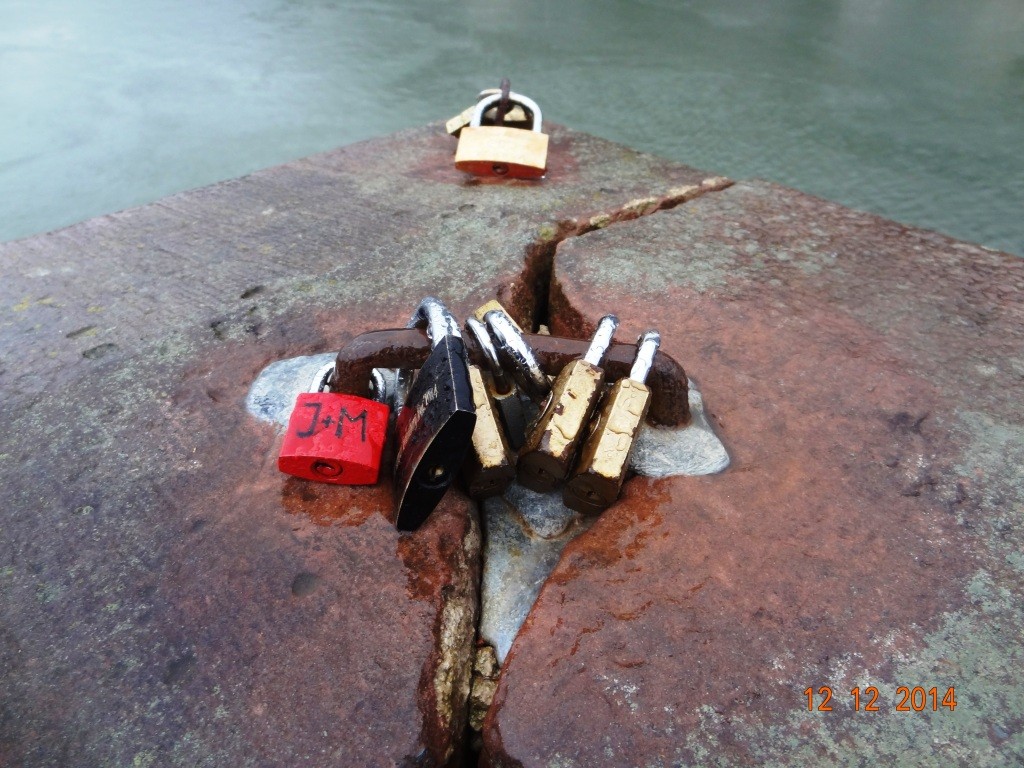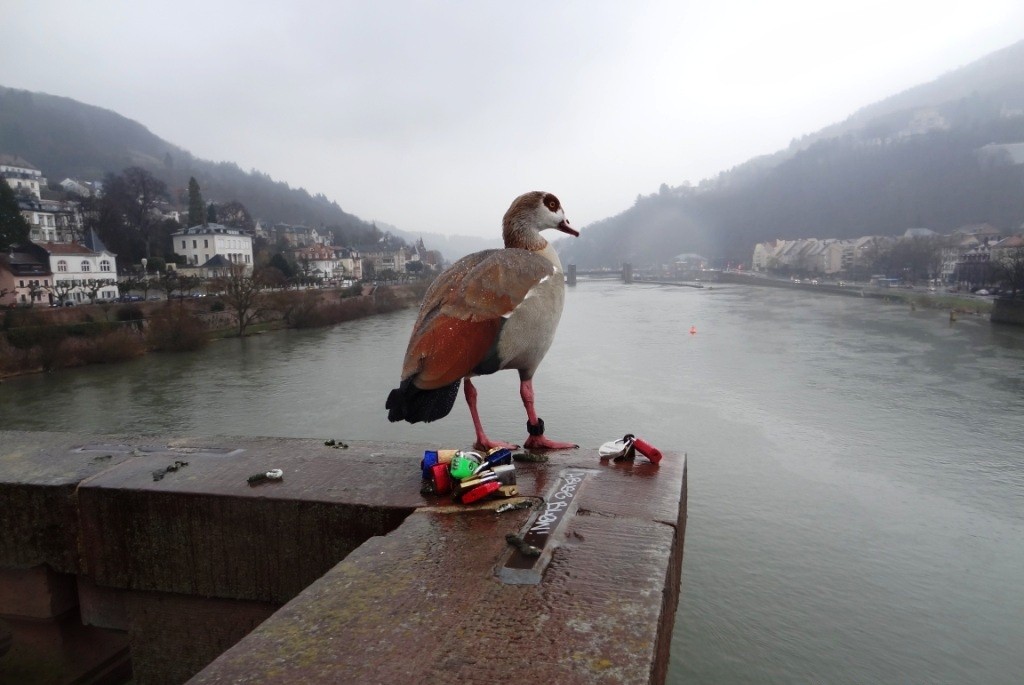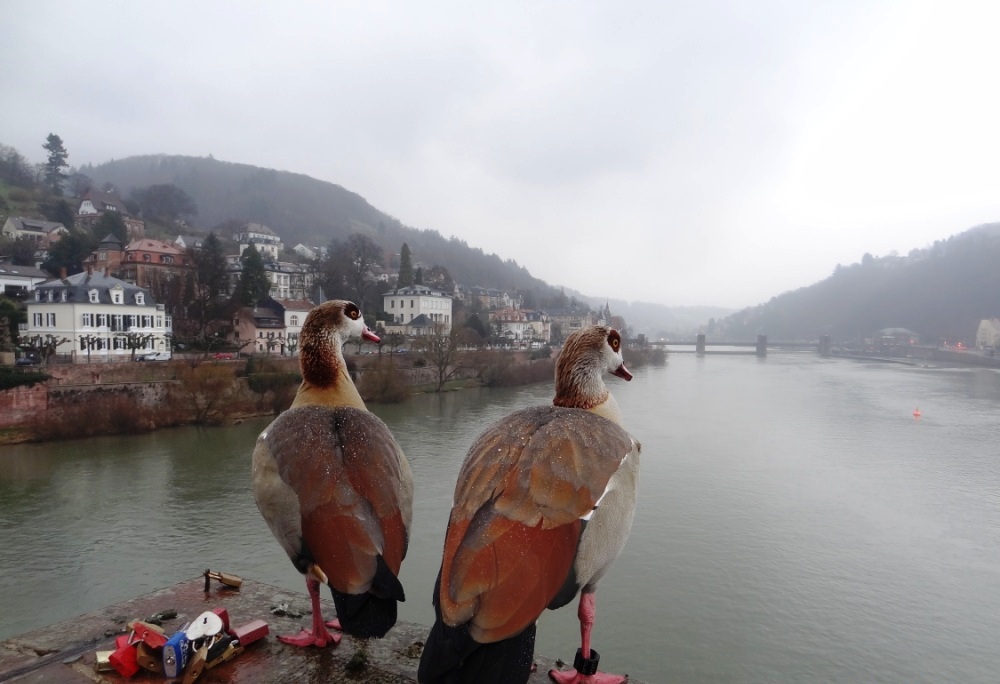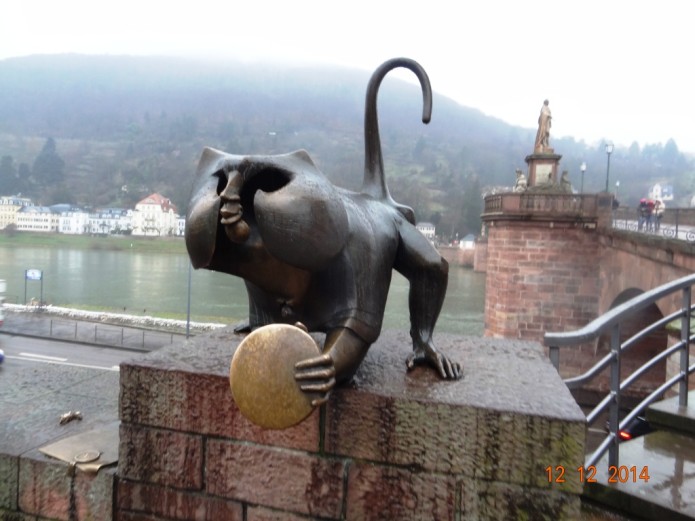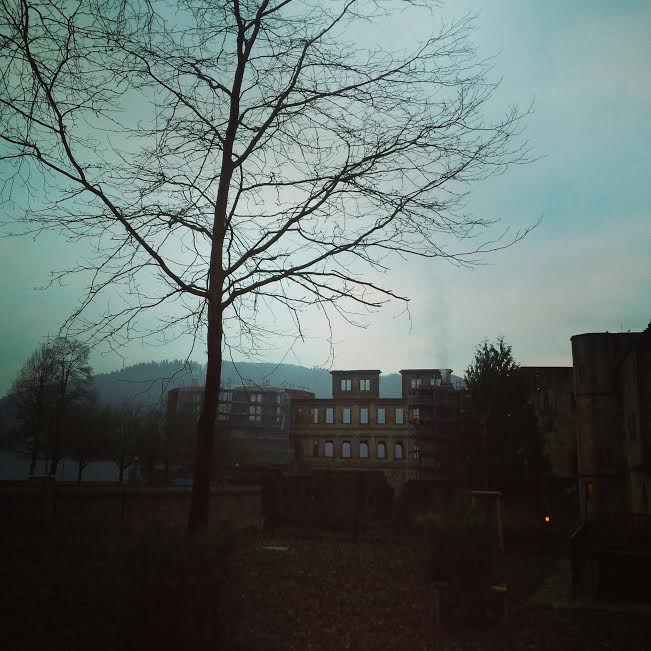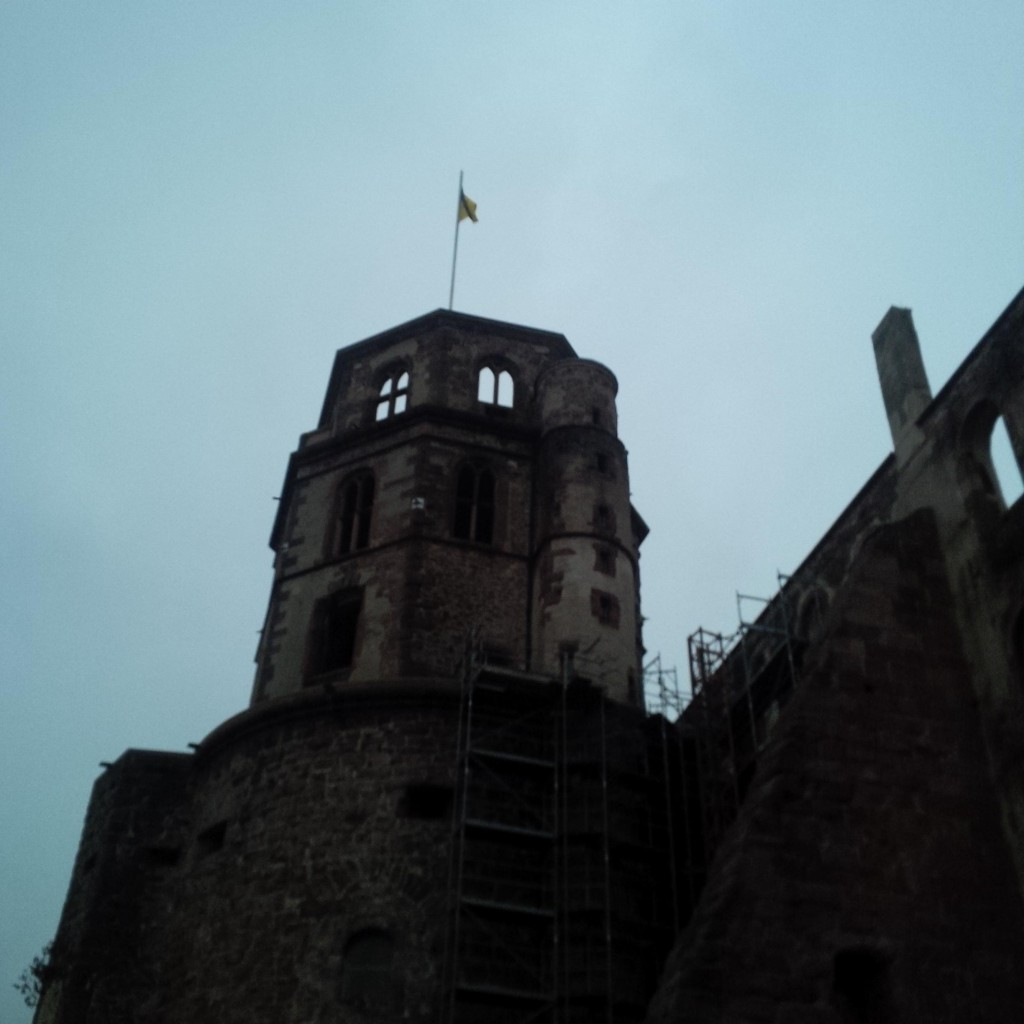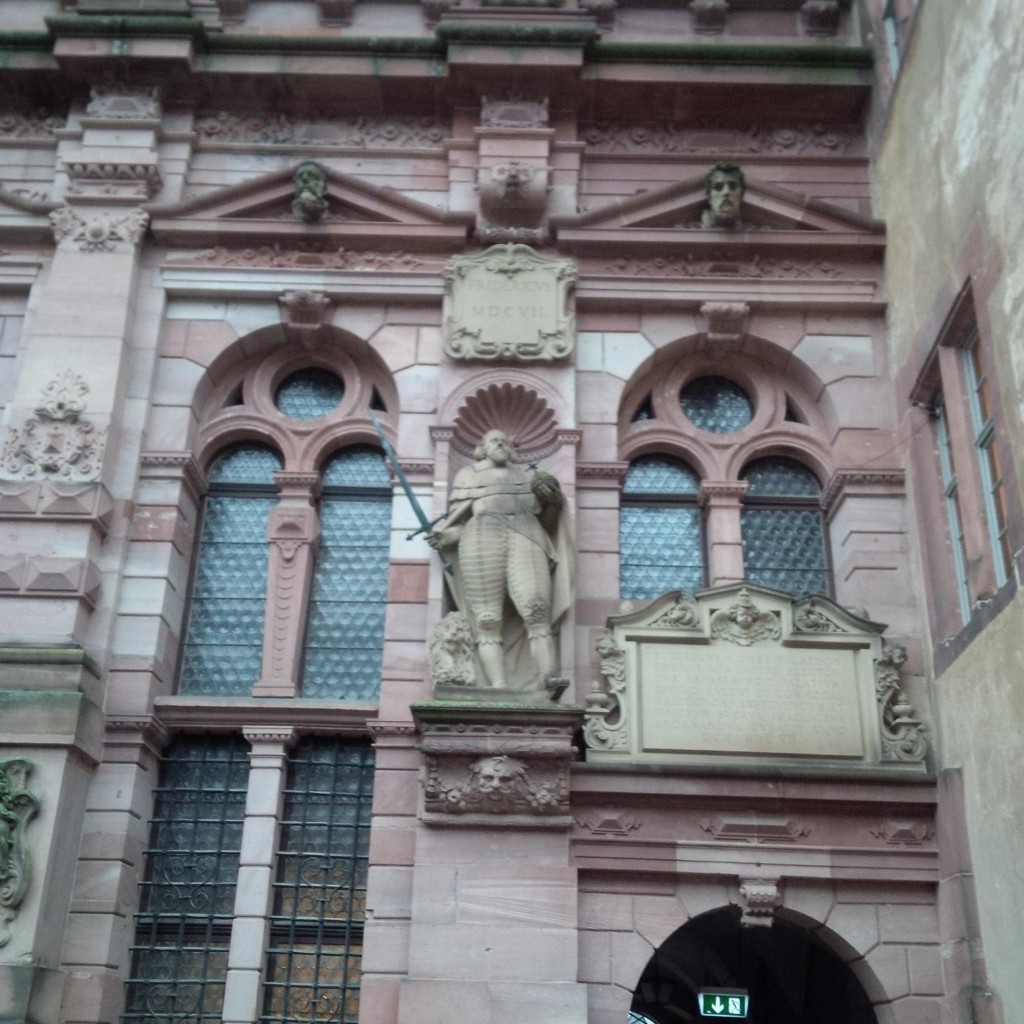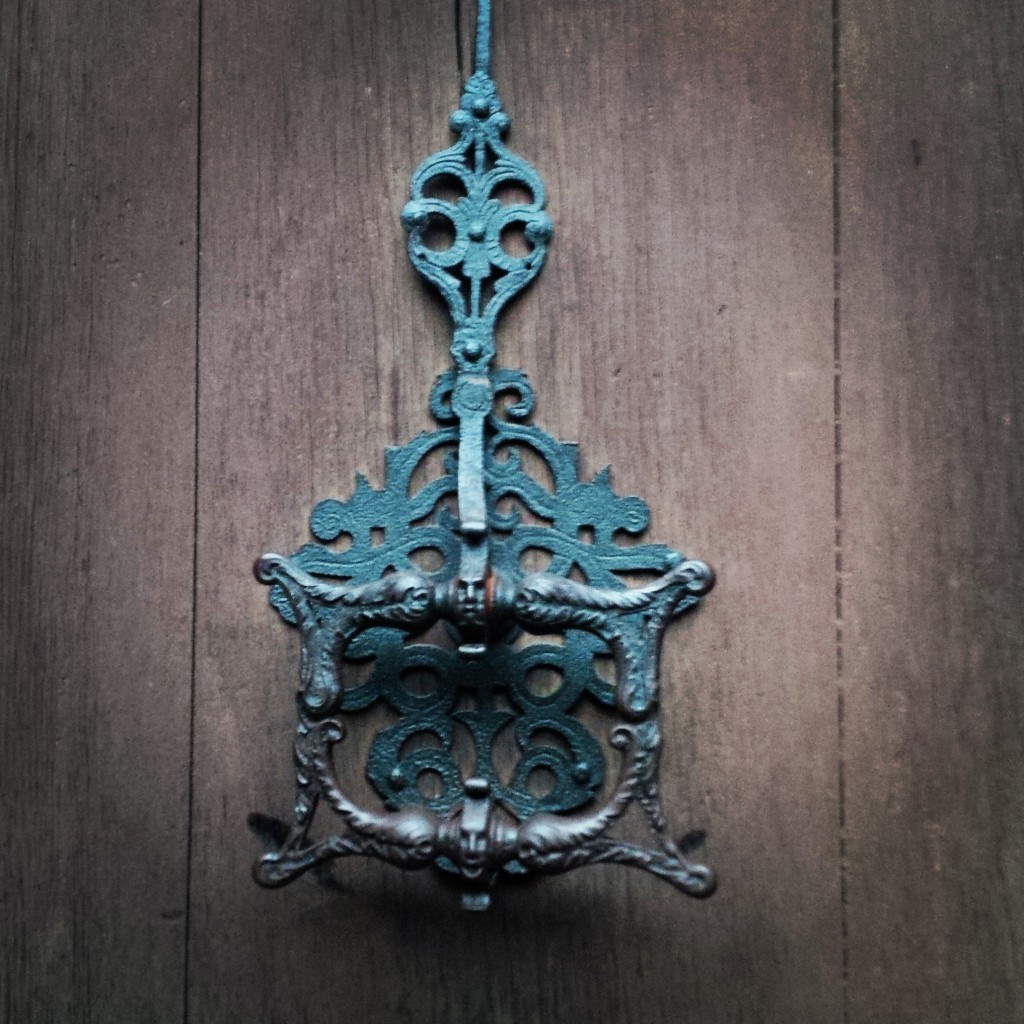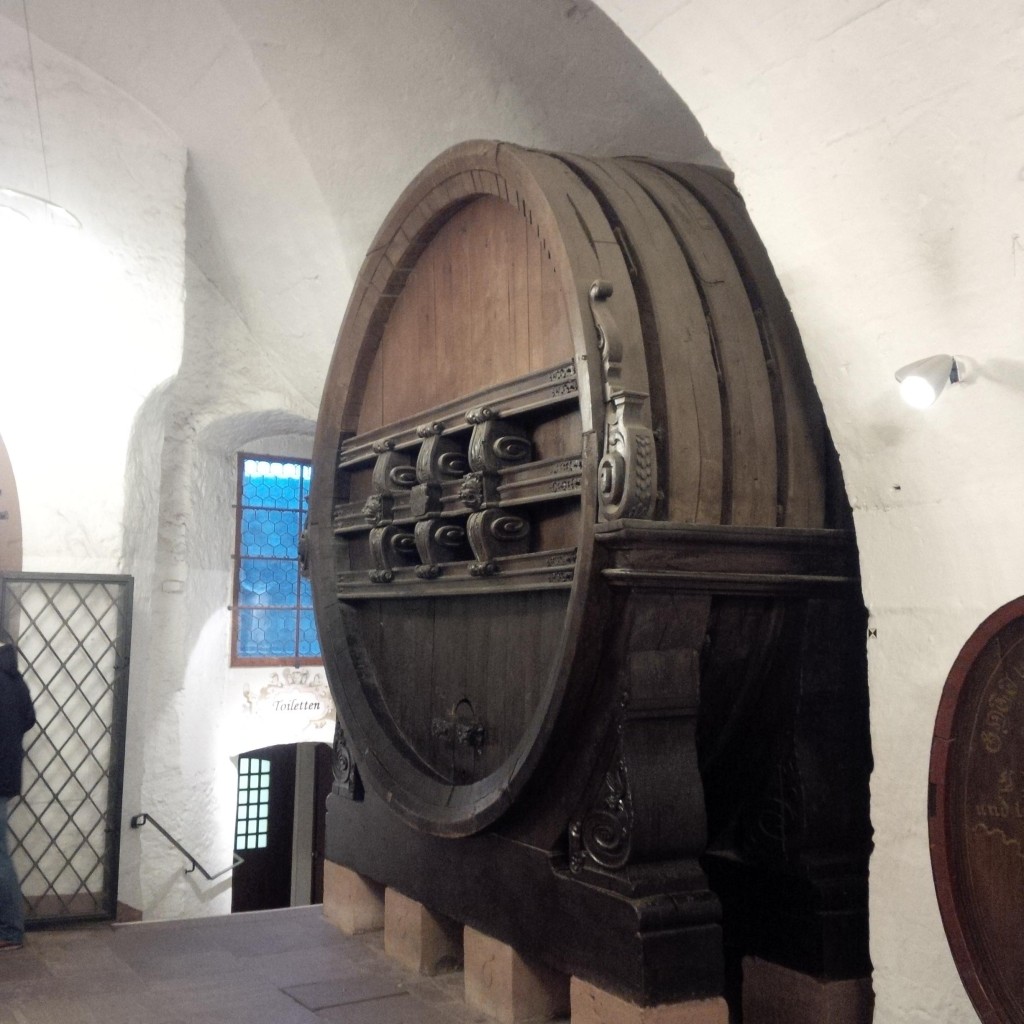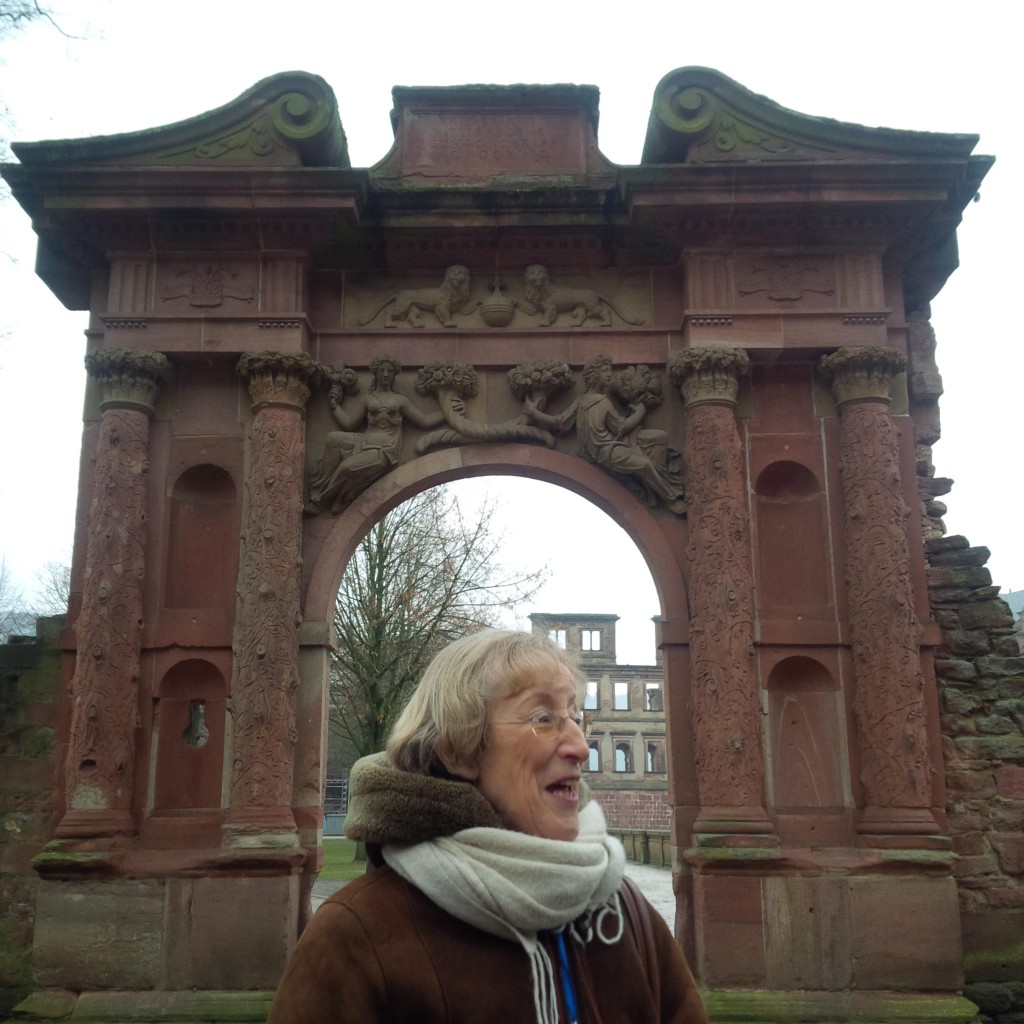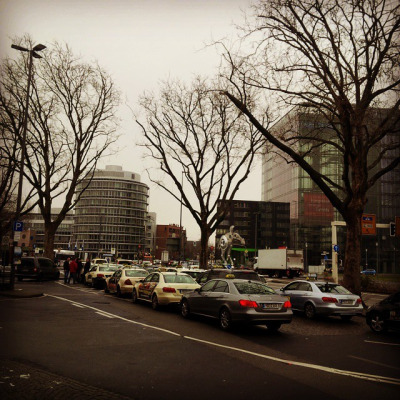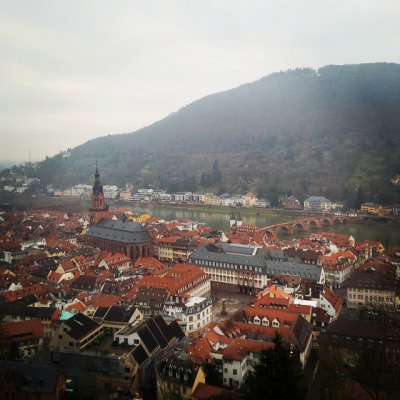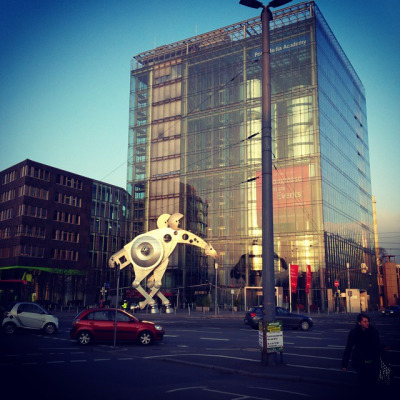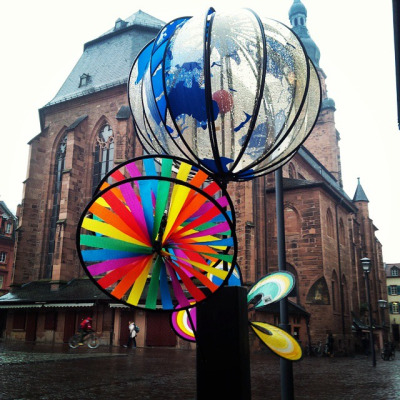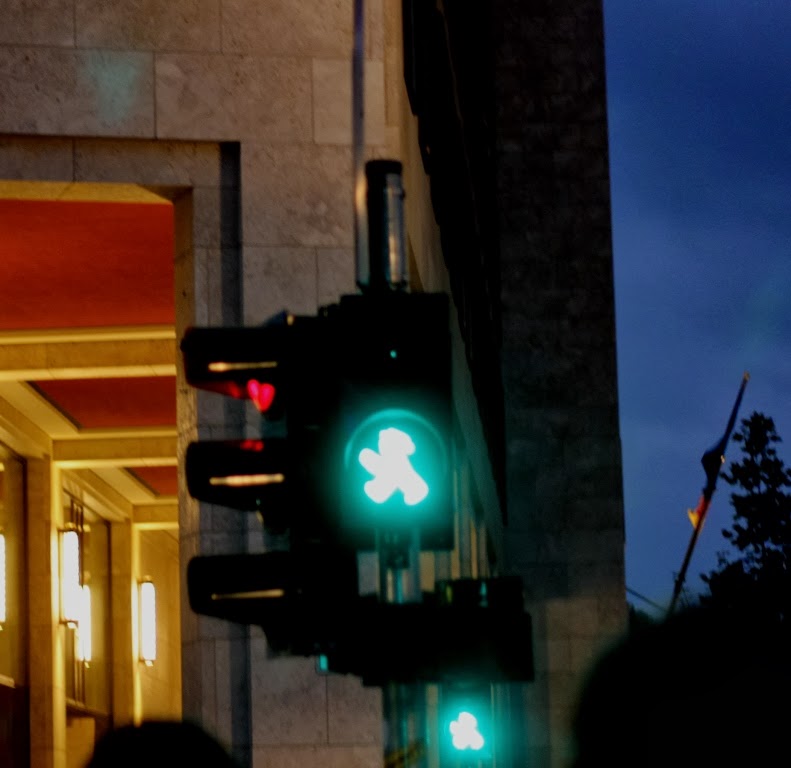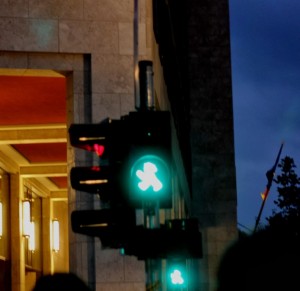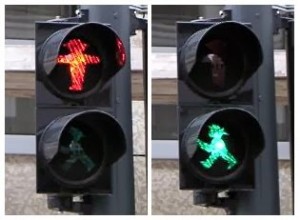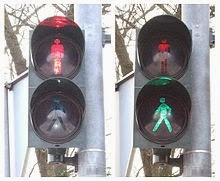The internet has powered travel like a turbo charger fitted onto an otherwise placid car. This grand marriage of a placid car and the turbo charger is of little use if after the marriage, you gift the car to a chap who firmly believes that flooring the pedal is a new age sin! When God sits on the dashboard, flooring the pedal is a good thing to do. Especially, if its about harnessing the power of the Internet before you visit a place. Yes, before the trip.
Trawling the internet for tidbits about places that I would see gives my wanderlust as much power as it gives the love for waddlesome sloth, a new meaning. Trawling for tidbits about Heidelberg lead me to the ‘Bridge Monkey’. Monkeys (and for that matter, any ape) hold human kind’s (read ‘my’) attention like none else. I leave it to you to mull over reasons.
Heidelberg’s Bridge Monkey I read, was a ‘tourist attraction’. Clangs of the keys on the keyboard absorbed what otherwise would have been a garrulous tirade on ‘tourist attractions’. I continued to indulge in the insoluble appetite for finding more and soon there was a pile of information that showed up on the screen.
The present day Bridge Monkey is a bronze sculpture that took its place at one end of the famous old bridge called Karl-Theordor-Brucke across the pristine River Neckar. The bridge by itself deserves a separate post. Perhaps many bound volumes of an encyclopedia. Any structure that is as pretty, or as resilient ( it was rebuilt nine times since 1742 ) deserves much more than a passing mention. But this post is about the Bridge Monkey. So there.
The present day Bridge Monkey showed up for the first time 1979. The work of Professor Gernot Rumpf . One website talked about the existence of a similar statue in an earlier time. An installation that disappeared as war and bloodshed punctured the pretty sight and the brilliant air. Sometime between 1689-93.
The idea of the ‘Bridge Monkey’, looked like one nice package and as though that wasn’t enough, it had a legend thrown in as well. Now, with a legend, even a passing gap in a mountain or pile of brick amasses a cloak of righteous importance.
One website told me that “..the Bridge Monkey is intended as a symbolic reminder to Heidelberg’s citizens that neither the city-dwellers nor the people who lived outside the city of Heidelberg were better than the other, and that they should look over their shoulder as they cross the bridge to remember this”.
By now, the Bridge Monkey had grown in stature in my mind. It had morphed from a ‘tourist attraction’ to a ‘must-see’
So, on a cold rain-soaked evening in Heidelberg, just as the pebbled streets of the old city radiated their stately presence in luxurious understated elegance, I saw the Bridge Monkey. And was instantly aware of the surprise that enveloped me. You see, the trouble with trawling for tidbits is that it surreptitiously provides for constructing an experience in the mind. Often times, what turns up on the ground, can be quite different to what the mind constructs.
The Bridge Monkey in reality presented itself as a structure that is much smaller and simpler than that one the mind had drawn up. Plus, it is unmarked and shows up just like that, at the end of this street.
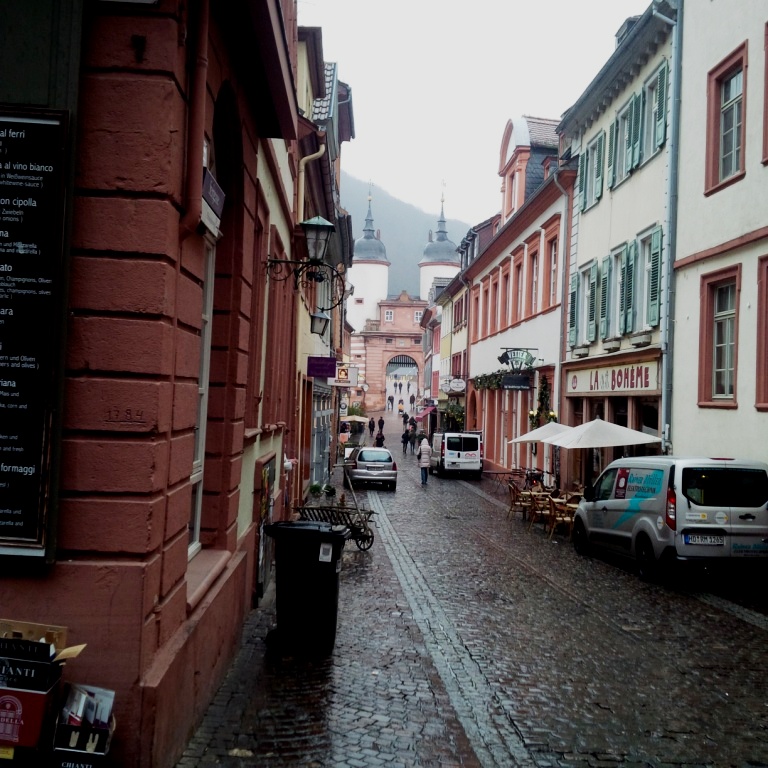
I must hurry to give some context. If at all this was to be in India, signboards which said something like ‘One Kilometer to world famous Bridge Monkey’ would be the norm from 357 kilometers! Stores selling sugar cane juice to Super Computers would carry the name of the Bridge Monkey as their names. Photographers lugging cameras would try and entice you into clicking a snap with the Bridge Monkey and hand it out to you in a jiffy.
A customary board that would say ‘The World Famous Bridge Monkey is closed between 2.00 PM – 4.00 PM. Please queue for tickets’. I would have queued as the Sun bristled and beads of sweat marked their presence and as a listless man from behind a dark counter hands over a ticket to enter, I would already be prepared to soak in for whatever follows with a degree of awe.
As much irritating I may make all of these sound, they provide life to the statue and livelihood to a zillion people in the neighbourhood.
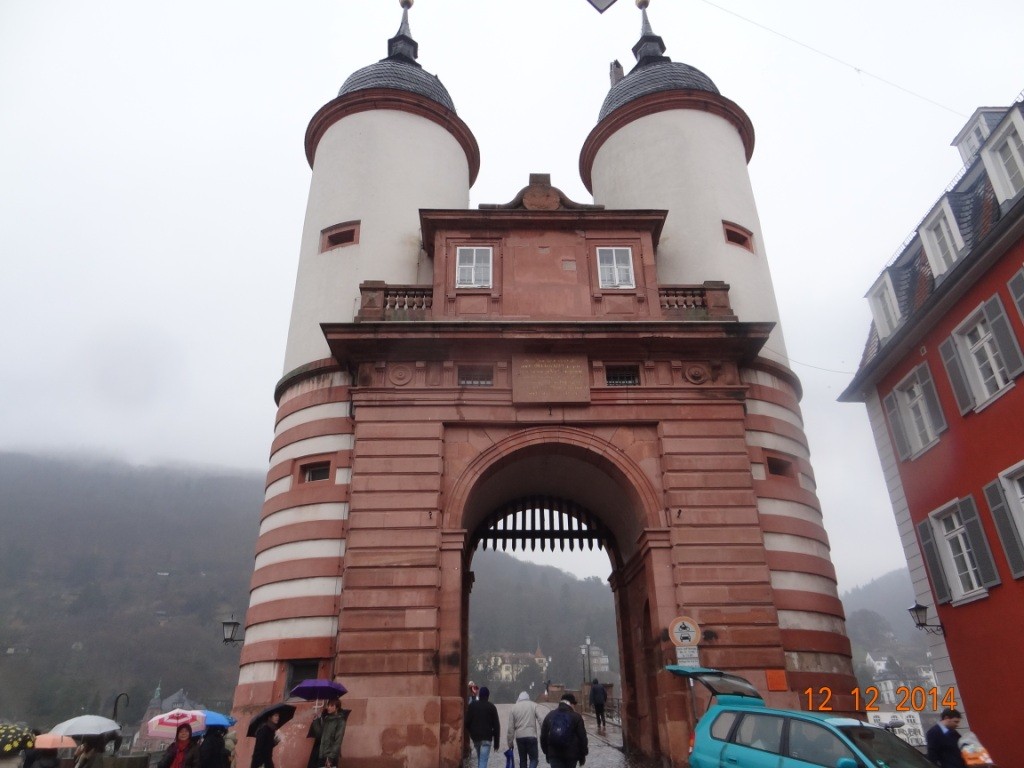
In forlorn loneliness it stood. Much smaller than what my mind had conjured up. (Can you spot the Monkey’s tail in the picture above? Peeking amongst the umbrellas)? An average Ganpati mandal organised by a the local auto drivers would have three times the size an infinite quantum of more noise around it and a scale of fervour that is indescribable. Especially so, considering the fact that the Bridge Monkey had its own prowess too.
Legends and myths invariably have a ring of things to do as well. Action items if you will that perpetuate the myth plus, make the visit seem purposeful! The Bridge Monkey is no exception.

Infact its awesomeness comes three pronged. It is believed that you could run your hands over the mirror to be blessed with fortune, touch the fingers of the monkey for a return to the city of Heidelberg. Plus, touching the accompanying mice, would get you more kids! From whatever little I saw, people go for the mirror and the monkey’s hands, but are cagey about the mouse.
A monkey with a cat face, who can bless you with wealth, travel and kids would be an alluring business proposition. The city of Heidelberg doesn’t seem to think so is obvious from the fact that the Bridge Monkey is left relatively untouched by commerce around it!
In its understated yet active presence, the city seems to showcase its own character. Of a simple, stately and rich presence. A presence that is unobtrusive. And in that unobtrusive solitude, he grew on me.
As time sped by in reckless haste, matched only by tiny flakes of snow that the rain seemed to bring, I found my hands involuntarily touch the fingers of the Bridge Monkey.
So far, nothing. Lets see. 🙂


